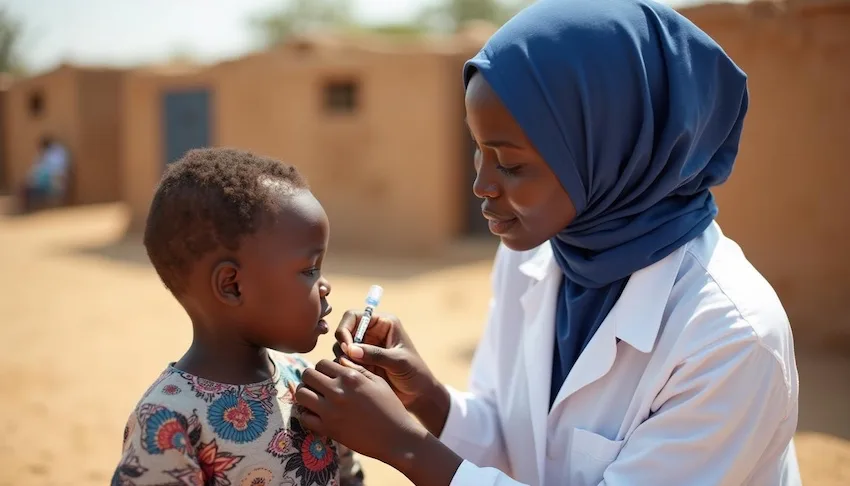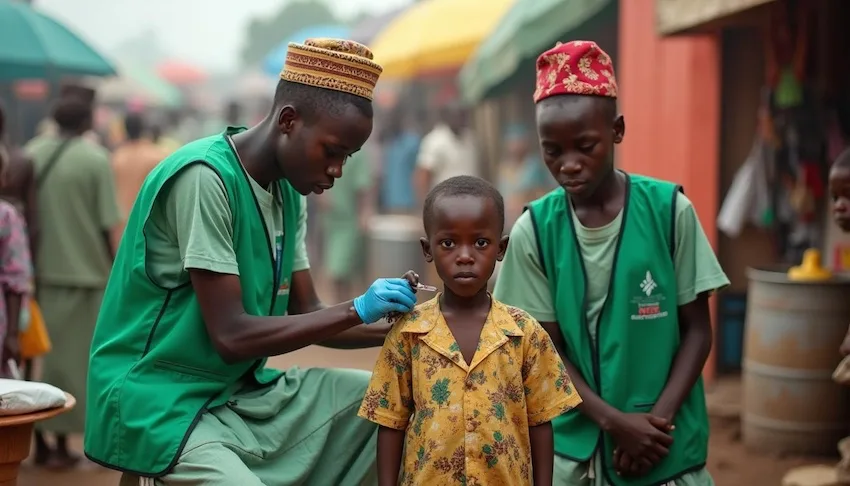
Immunization Challenges in Borno State
In Jere Local Government Area (LGA) of Borno State, four-year-old Amina* from Mairi Ward in Buladina settlement has faced intermittent immunization since birth. Despite numerous vaccination attempts, she missed critical doses, leaving her vulnerable to poliovirus.
“Amina missed some doses because we are often not around when they conduct the vaccination campaigns,” explained her mother, Saratu Bulama* (*names changed for privacy).
Amina’s situation illustrates the persistent challenges Nigeria faces in halting poliovirus transmission, especially in hard-to-reach and conflict-affected regions.
Addressing Circulating Variant Poliovirus Type 2 (cVPV2)
Stopping circulating variant poliovirus type 2 (cVPV2) transmission remains a top priority for Nigeria. Between January 2024 and 10 March 2025, Nigeria recorded 122 confirmed cVPV2 cases across 15 states, including 10 cases in 2025 alone.
The National Primary Healthcare Development Agency (NPHCDA), coordinated by the National Emergency Operations Centre (NEOC) and supported by the World Health Organization (WHO), employs the Targeted Local Outbreak Response (TLR) strategy. This strategy specifically addresses immunity gaps by vaccinating susceptible children in high-risk areas.
Recent Vaccination Campaign Outcomes
A recent four-day immunization campaign targeted 3.8 million children across seven high-risk states: Borno, Jigawa, Kano, Kebbi, Sokoto, Yobe, and Zamfara. By the end of the campaign, over 3.6 million children received the novel oral polio vaccine type 2 (nOPV2). However, challenges persisted due to caregiver noncompliance or children being absent during the campaign.
Dr Abdulkadir Usman Gana, NEOC Incident Manager, noted, “While it’s encouraging to see the high number of children reached, we must intensify social mobilization and refine our strategies to address vaccine hesitancy and missed children. Our goal is to ensure no child is left behind.”
Strategic Planning for Impact
The NEOC operations working group, coordinated by WHO, employs a data-driven approach to plan and monitor campaigns. Surveillance data, routine immunization records, and laboratory results are analyzed to determine campaign targets and logistical requirements effectively.
Dr Walter Kazadi Mulombo, WHO Country Representative in Nigeria, praised the TLR strategy: “The targeted nature of TLR allows for better supervision and high-quality execution. WHO remains committed to supporting Nigeria despite funding constraints.”
Mobilizing Communities
Throughout the campaign, WHO supported states by training over 18,727 health workers, coordinating meetings, and establishing systems to track vaccination adherence. Over 6,000 WHO personnel across national, state, LGA, and ward levels ensured effective planning and execution.
Zayyanu Adamu, a field volunteer in Kebbi State, highlighted the importance of community engagement, saying, “We organized dialogues to sensitize residents about vaccine importance, resolving cases of noncompliance, which significantly improved our success rates.”

Quality Assurance and Measuring Impact
To validate vaccination coverage, WHO facilitated Lot Quality Assurance Surveys (LQAS). Independent experts conducted random household checks to confirm vaccination status. The surveys indicated impressive results, with 97% of surveyed LGAs achieving over 90% coverage.
Sustaining Progress: Future Vaccination Efforts
The next TLR phase begins 12 March 2025, targeting 946,600 children in Jigawa, Oyo, Sokoto, Yobe, and Zamfara. Continued innovation, increased community trust, and sustained global support are essential for Nigeria’s success in becoming polio-free.
- Original Story:
- Story By:
- Date:
- Please Support: